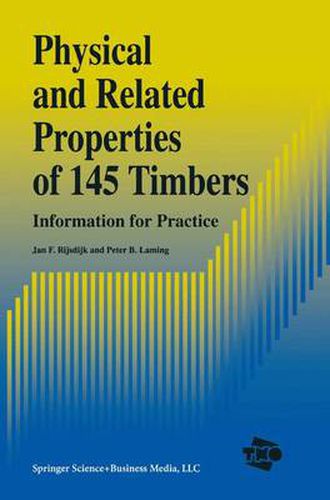Readings Newsletter
Become a Readings Member to make your shopping experience even easier.
Sign in or sign up for free!
You’re not far away from qualifying for FREE standard shipping within Australia
You’ve qualified for FREE standard shipping within Australia
The cart is loading…






This title is printed to order. This book may have been self-published. If so, we cannot guarantee the quality of the content. In the main most books will have gone through the editing process however some may not. We therefore suggest that you be aware of this before ordering this book. If in doubt check either the author or publisher’s details as we are unable to accept any returns unless they are faulty. Please contact us if you have any questions.
To obtain the best attainable end-use stability of a wooden product it is essential to have information on the movement and shrinkage that may be expected. In this context, it is essential when drying timber to choose an accurate drying schedule in relation to the shrinkage figures and the risk of deformation. Generally, many timber properties are closely related to the density and the nominal specific gravity. With the given detailed information (per wood species), the water content (amount of evaporation and energy in timber drying) or the void volume (in case of impregnation, in order to estimate the maximum uptake of a liquid) in the wood can be calculated. The physical properties of 145 commercial timbers have been determined in the past decades. They comprize the shrinkage and swelling values, equilibrium moisture content, hysteresis, density and nominal specific gravity, including the variation coefficients of these values. The shrinkage, swelling and hysteresis are presented in graphic form; the other information in tabular form. Additional information about some other properties of physical nature has been added, e.g. gluelam products and rattan.
$9.00 standard shipping within Australia
FREE standard shipping within Australia for orders over $100.00
Express & International shipping calculated at checkout
This title is printed to order. This book may have been self-published. If so, we cannot guarantee the quality of the content. In the main most books will have gone through the editing process however some may not. We therefore suggest that you be aware of this before ordering this book. If in doubt check either the author or publisher’s details as we are unable to accept any returns unless they are faulty. Please contact us if you have any questions.
To obtain the best attainable end-use stability of a wooden product it is essential to have information on the movement and shrinkage that may be expected. In this context, it is essential when drying timber to choose an accurate drying schedule in relation to the shrinkage figures and the risk of deformation. Generally, many timber properties are closely related to the density and the nominal specific gravity. With the given detailed information (per wood species), the water content (amount of evaporation and energy in timber drying) or the void volume (in case of impregnation, in order to estimate the maximum uptake of a liquid) in the wood can be calculated. The physical properties of 145 commercial timbers have been determined in the past decades. They comprize the shrinkage and swelling values, equilibrium moisture content, hysteresis, density and nominal specific gravity, including the variation coefficients of these values. The shrinkage, swelling and hysteresis are presented in graphic form; the other information in tabular form. Additional information about some other properties of physical nature has been added, e.g. gluelam products and rattan.